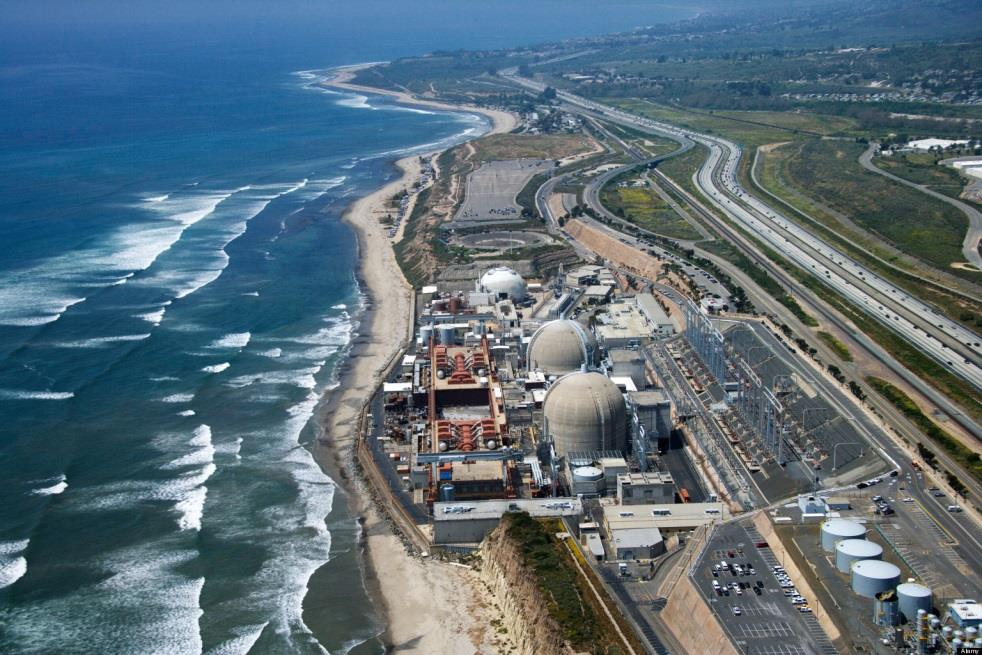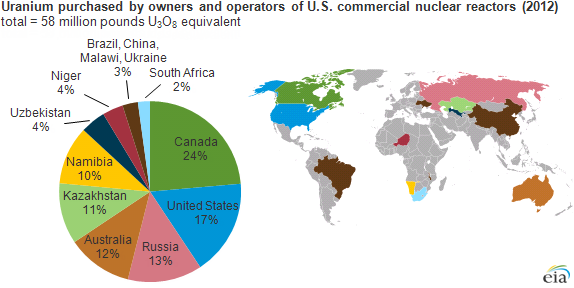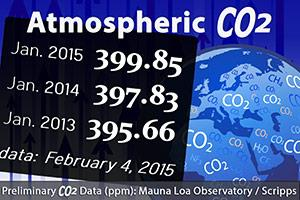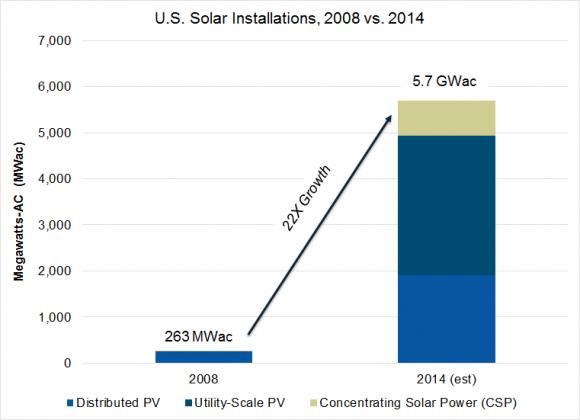Nuclear Energy: “Too Cheap to Meter”?
One definition of this phrase as found in Wikipedia is: “a commodity so inexpensive that it is cheaper and less bureaucratic to simply provide it for a flat fee or even free.” Lewis Strauss, past Chairman of the United States Atomic Energy Commission, famously said in a September 1954 speech, “Our children will enjoy in their homes electrical energy too cheap to meter.” We know today however, that nuclear power has costs, and that “There’s no such thing as a free lunch.”
This promise of cheap electricity led to the construction of about 104 nuclear power reactors in the U.S. with 100 still licensed to operate. Most are located near rivers and coastlines in order to have a steady supply of cooling water as seen in this photo [Huffington Post] of the San Onofre plant near San Diego on the Pacific Coast. About $600 million was invested in repairs to this facility just before it was decided to close it in 2013 because of safety and cost issues.
The photo of this plant, which is in some proximity to earthquake zones, is eerily like the Fukushima nuclear reactors in Japan, three of which were destroyed by a tsunami in 2011 and will take decades and billions of dollars to clean up.

A nuclear facility may have two or more nuclear reactors present as shown in the photo. But in the last few years four reactors have been closed for economic reasons and not because of the anti-nuclear movement. The 42 year old Vermont Yankee is the most recent case in point and closed in December 2014. It was mostly a victim of its small size, and the low cost of natural gas for producing electricity.
Entergy, owner of Vermont Yankee, projects that it will cost $1.2 billion to decommission the facility but its trust fund has only half that amount and so full dismantling will not begin for decades. Its immediate task [New York Times article January 5, 2015] is to cool, store and secure the spent fuel there.

Uranium is the primary fuel source used in all reactors and the raw material is sourced from many countries all over the world. Cost and availability is not an issue. See pie chart by EIA [Energy Information Agency.]
The most expensive and difficult issue appears to be how best to store the waste by-products from the fission process. Still, today, the U.S. has no high level radioactive waste storage facility and none on the horizon either.
It may take decades before the long term safety, political and financial issues are finally resolved. Finding the right geological repository and getting the local people to concur with storage of nuclear waste that will remain toxic for tens of thousands of years is a major impediment.
In addition to nuclear power plant radioactive waste we have to add that from nuclear weapons manufacture and reprocessing. Some 30 to 50 radioactive isotopes of elements need to be addressed each of which has its own toxic effects, varying amounts and lifespan. Some last for minutes and others last millions of years. It gets very complicated and very expensive very fast.
While electricity generating nuclear power plants are not a significant source of greenhouse gases [GHG] such as carbon dioxide they have many issues as presented.
See the illustration “Atmospheric CO2” where the most recent level is 399.85 parts per million of CO2. This GHG is driving climate change and our civilization must limit these emissions or suffer the effects of catastrophic warming. CO2 levels today are higher than at any time for at least the last 800,000 years.

So what to do?
Continue to subsidize nuclear and fossil fuels i.e., coal, oil and gas?
Develop national policies and rational subsidies for renewables such as solar and wind?
With enhanced policies at the state and federal levels for renewables [many initiatives will expire or decrease soon] the tremendous growth in wind and solar generated electricity could continue and significantly reduce GHG emissions and thus our impact on climate change.
See chart which shows a 22X Growth in “U.S. Solar Installations ...” in the last 6 years!

It seems we can do this!
The scientific career of Raymond N. Johnson, Ph.D., spanned 30 years in research and development as an organic/analytical chemist; he is currently founder and director of the Institute of Climate Studies USA (www.ICSUSA.org). Climate Science is published the first Sunday of every month.
Menu



